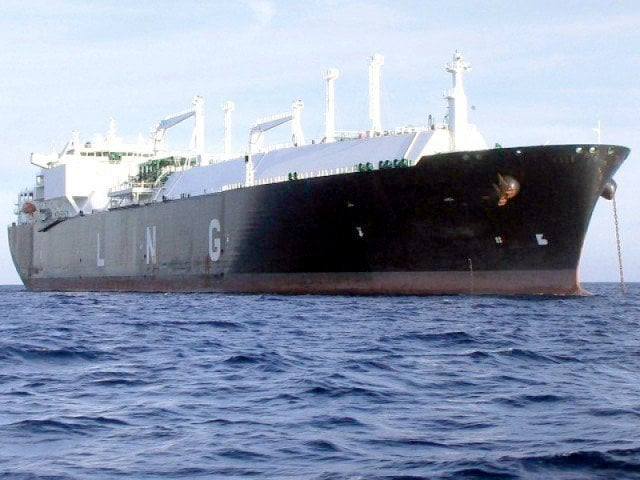Private sector to import 150 mmcfd of LNG
Will utilise excess capacity of terminal, help overcome gas shortage

With gas demand set to surge in the winter season, the government has given private sector the go-ahead for import of 150 million cubic feet per day (mmcfd) of liquefied natural gas (LNG) by utilising the excess capacity of an import terminal to overcome gas crisis in the country.
State-run Pakistan LNG Limited (PLL) is in the process of allocating idle capacity of the second LNG terminal to the private sector. After allocation, the private sector will be importing LNG for the first time in Pakistan.
The private sector had been struggling since long to import LNG. The previous Pakistan Muslim League-Nawaz (PML-N) government had inked an LNG supply deal with Qatar at a high price and no sector of the economy was ready to buy that gas. LNG-based power plants have already been given waiver from guaranteed LNG offtake.
Officials said the private sector would not only be able to import gas at cheaper rates but also there would be no financial risk to the government.
Earlier, the private sector faced delay in LNG import due to bureaucratic hurdles and the monopoly of gas companies despite the functioning of terminals at less-than-full capacity. This put a multimillion-dollar additional tolling fee on the consumers.
However, the present government has allowed the private sector to avert the financial risk and overcome gas crisis by making LNG imports.
Sources told The Express Tribune that gas demand and supply was reviewed in a recent meeting of the Cabinet Committee on Energy (CCOE). The Petroleum Division briefed the meeting on gas demand and supply in winter months.
The committee was told that Sui Southern Gas Company (SSGC) would require 200 mmcfd of LNG to meet shortfall during October and November 2020 and February 2021.
In December 2020 and January 2021, the demand from domestic gas consumers would increase three times on the Sui Northern Gas Pipelines’ (SNGPL) system and two times on the SSGC network. Consequently, it was expected that there would be a combined shortfall of 500 mmcfd in January 2021 on both systems.
The shortfall will require curtailment and mitigation measures through diversion from other sectors.
CCOE Chairman Asad Umar emphasised that the domestic sector was a priority in gas supply as approved by the federal cabinet, therefore, no curtailment may be made in supplies to that sector during winter.
It was suggested that there should be a proper mechanism to assess the expected demand and supply of gas during the winter season.
The Petroleum Division told the meeting that if a 17km pipeline at Port Qasim could be completed by mid-December 2020, an additional 150 mmcfd of LNG would be available through the private sector. It also spoke about various actions taken and proposed alternatives to meet the shortfall on both systems.
Curtailment plan
Gas utilities would be required to do pressure profiling in December and January for domestic consumers. Power producers would be given a lower quantity of gas compared to demand in January.
The CCOE noted the gas demand-supply situation presented by the Petroleum Division and decided that 150 mmcfd of LNG would be imported through utilisation of the excess capacity of an import terminal by the private sector.
To meet demand, PLL and SSGC may decide themselves to utilise the available capacity, in case the private sector failed to import the additional LNG.
The Petroleum Division was directed not to curtail gas supply to the domestic sector to meet the shortfall in the industrial sector as the federal cabinet had already accorded priority to gas supply to the domestic sector.
Published in The Express Tribune, October 29th, 2020.
Like Business on Facebook, follow @TribuneBiz on Twitter to stay informed and join in the conversation.


















COMMENTS
Comments are moderated and generally will be posted if they are on-topic and not abusive.
For more information, please see our Comments FAQ